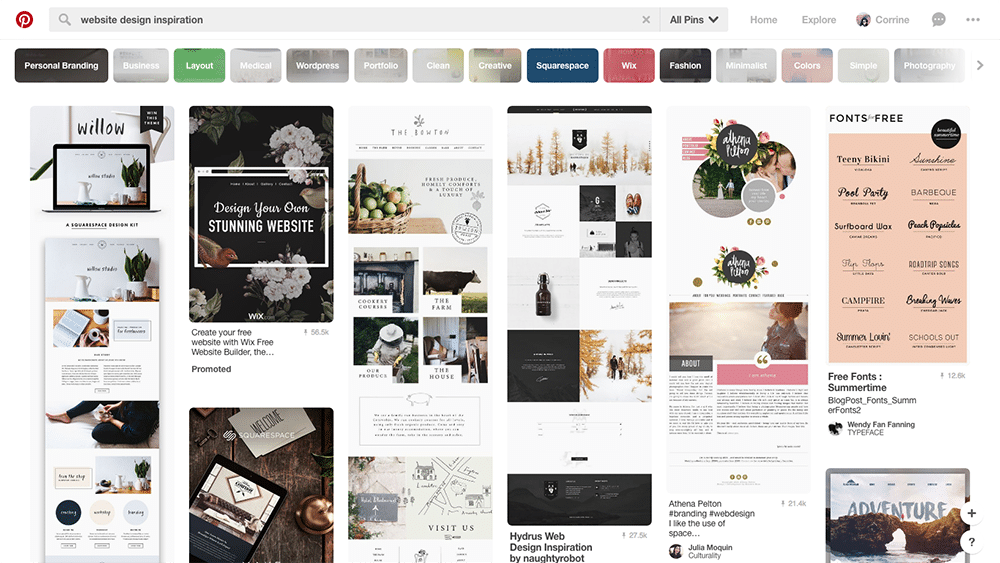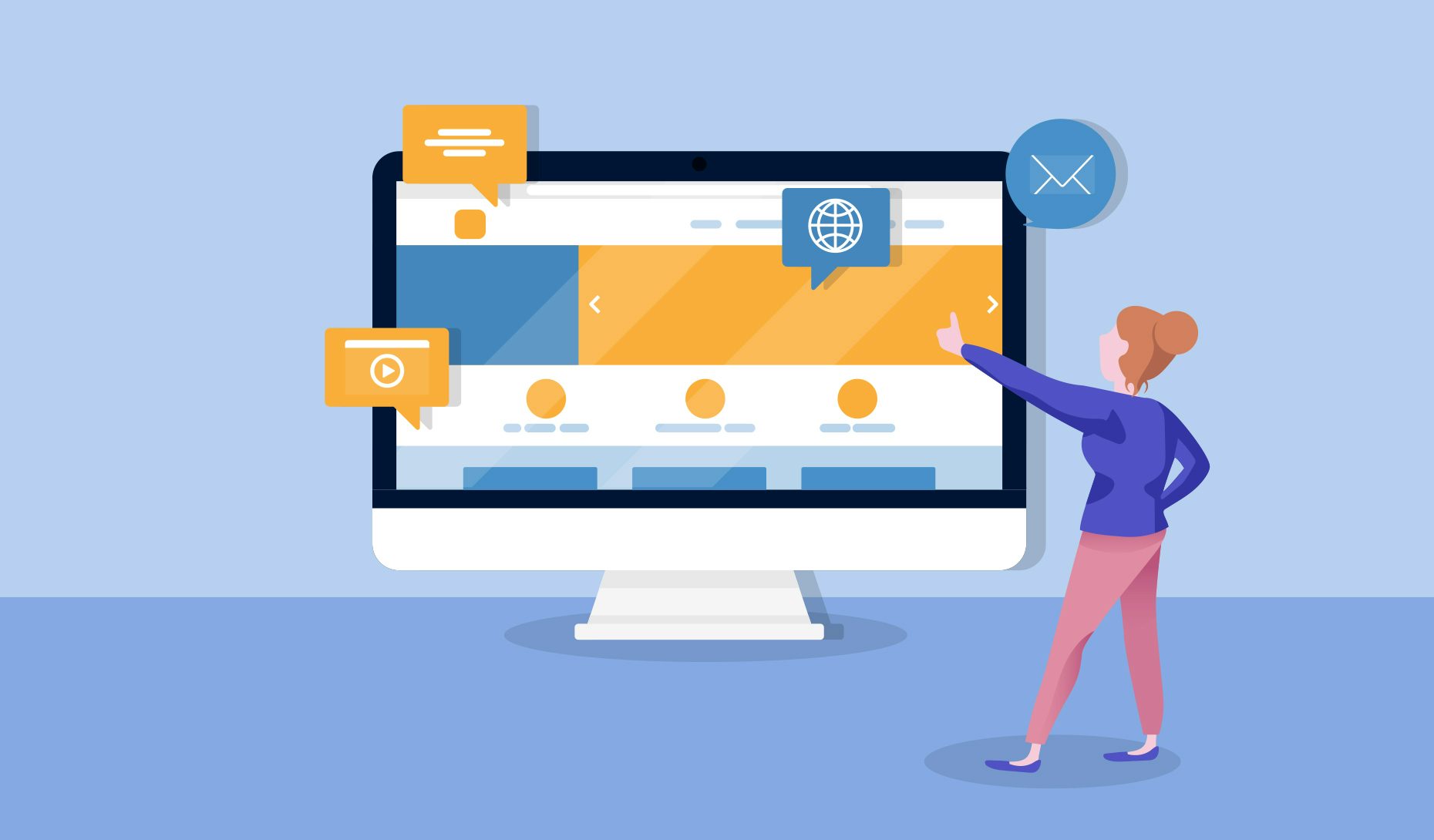Checking Out the Effect of Responsive Internet Layout on Ease Of Access and Individual Contentment Across Different Instruments
The emergence of receptive internet style (RWD) has transformed the electronic landscape, especially in boosting accessibility and individual fulfillment across a wide variety of tools. By using adaptive user interfaces and versatile layouts, RWD not just caters to varied user demands however also addresses the critical significance of inclusivity in web experiences.

Meaning of Responsive Internet Design
Receptive Website Design (RWD) transforms the customer experience across numerous gadgets by making sure that web material adapts fluidly to different display sizes and alignments. This layout method utilizes versatile grids, formats, and pictures, along with CSS media questions, to produce a smooth browsing experience. By utilizing these methods, RWD allows web sites to automatically restructure and resize material, making it obtainable on tools varying from desktop computer systems to smartphones.
The core principle of RWD is to supply an ideal viewing experience, which consists of easy reading and navigation without the demand for extreme resizing or scrolling. This versatility is crucial in a digital landscape where individuals accessibility information via numerous devices with differing screen resolutions. RWD not just enhances use but also improves load times, as it usually utilizes a solitary codebase to serve multiple tools, lowering the need for separate mobile sites.
Eventually, Receptive Website design intends to develop a engaging and cohesive user experience, guaranteeing that material is functionally reliable and aesthetically attractive, no matter of the tool being made use of. This flexibility is critical in meeting the varied demands these days's net customers, cultivating interaction and fulfillment throughout systems.
Relevance of Availability
Exactly how can we guarantee that all users, regardless of their abilities, can engage with internet material successfully? Ease of access in internet design is of extremely important significance, as it fosters inclusivity and ensures equivalent accessibility to info for individuals with disabilities. This encompasses visual, acoustic, and cognitive problems, requiring developers to take into consideration varied individual needs.
Applying availability functions, such as alternative message for pictures, key-board navigation, and ideal color contrast, enables users to connect with content perfectly. Additionally, adhering to established standards, such as the Web Material Access Standards (WCAG), provides a framework for developing accessible internet experiences. web design.
By prioritizing availability, companies not only adhere to lawful needs however additionally boost their brand online reputation, showing a dedication to social obligation. Obtainable web sites often result in enhanced functionality for all individuals, as functions created for inclusivity can benefit a more comprehensive target market.
Inevitably, the relevance of access goes beyond simple conformity; it has to do with producing a digital environment where every individual can browse, understand, and involve with content efficiently, thus enhancing the overall internet experience for everybody.
Individual Contentment Throughout Devices
Several individuals expect a seamless experience when accessing internet material across numerous tools, from desktops to smartphones. This expectation is rooted in the raising variety of tools and display sizes readily available today. Receptive website design (RWD) plays a crucial duty in satisfying these expectations by ensuring that internet sites adjust fluidly to various display settings.
Individual complete satisfaction is significantly affected by the availability and functionality of a site - web design. When customers can quickly browse, check out, and communicate with material despite the tool they are using, their overall satisfaction boosts. A well-implemented receptive design lessens the requirement for zooming or straight scrolling, which can annoy customers and lead to higher bounce rates
As individuals engage with material that is tailored to their device, they are much more most likely to invest time on the site, return for future check outs, and suggest it to others. Inevitably, receptive internet layout cultivates a favorable connection in between customers and web material throughout tools.
Influence on Mobile Users

The impact of RWD on mobile customers extends past appearances; it substantially influences functionality. A well-designed receptive site minimizes the need for extreme scrolling and zooming, promoting a much more intuitive communication. Furthermore, it cultivates inclusivity by accommodating customers with varying capacities, making sure that those that rely upon mobile phones can access info with simplicity.
Furthermore, mobile users gain from quicker filling times, as RWD optimizes resources based on tool capacities. This efficiency is critical, as mobile users typically look for quick details and might abandon sites that fail to pack quickly. Inevitably, the integration of receptive web layout is necessary for meeting the varied demands of mobile users, enhancing their total experience and encouraging ongoing involvement with the web content.
Ideal Practices for Execution
Implementing receptive website design (RWD) effectively requires adherence to several best techniques that guarantee optimal performance across devices. Initially, making use of a fluid grid format is vital; this enables aspects to resize proportionally based on the screen dimensions, supplying a smooth experience. In addition, employing versatile pictures guarantees that visuals range properly without shedding quality or triggering layout issues.

Making sure that all interactive aspects are touch-friendly and optimizing web page lots times considerably add to user fulfillment and access. By adhering to these ideal techniques, organizations can produce a robust and easily accessible internet visibility that satisfies the varied requirements of individuals across various tools.
Final Thought
In conclusion, receptive internet style plays an important function in boosting access and individual complete satisfaction across diverse devices. Eventually, the assimilation of finest methods in responsive style cultivates inclusivity, reduces bounce rates, and promotes greater customer interaction.
The emergence of receptive internet design (RWD) has actually changed the digital landscape, specifically in boosting ease of access and individual contentment throughout a wide variety of tools.Responsive Internet Design (RWD) transforms the customer experience throughout different devices by making sure that web content adapts fluidly to different screen sizes and orientations. Eventually, responsive internet layout fosters a favorable relationship between users and internet content across tools.
Over 54% of international web traffic now originates from mobile devices, highlighting the important importance of optimizing web experiences for this user base. read this article Responsive internet design (RWD) plays an essential function in improving access and user contentment for mobile individuals.